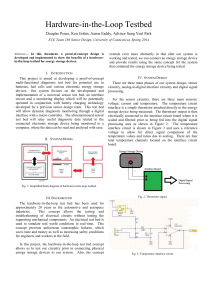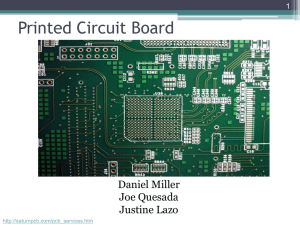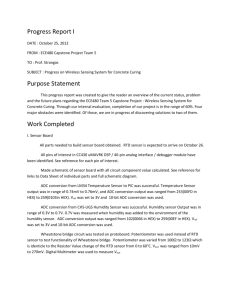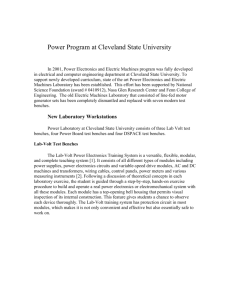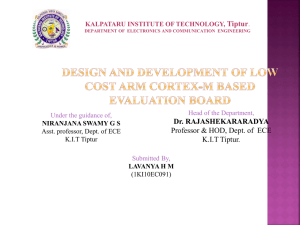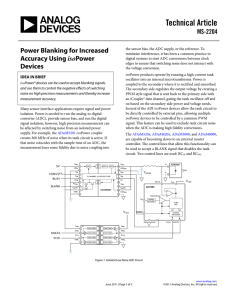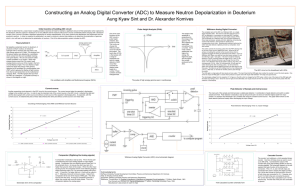Final Presentation
advertisement
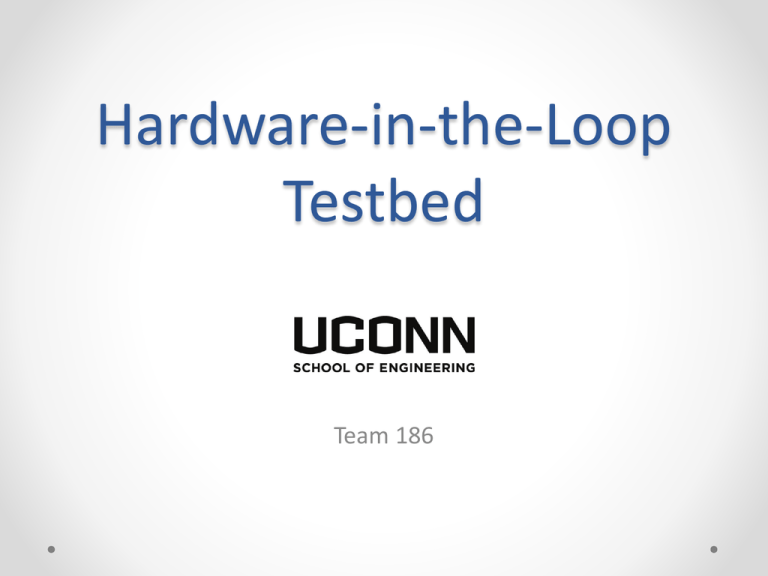
Hardware-in-the-Loop Testbed Team 186 Project Collaborators • Team Members: o Aaron Eaddy – EE o Ken Gobin – EE/COMPE o Douglas Pence – ENGR PHYS/EE • Team Advisor/Sponsor: o Sung Yeul Park – Assistant Professor Outline • Background • Components: o Microcontroller o Interface circuit o Sensor circuits • • • • Design Updates Circuitry Timeline Budget Background • Hardware-in-the-Loop: o A simulation technique that is used in the development and testing of complex real-time embedded system designs. o Benefits: • Function tests are able to be done at an early stage of development. • Laboratory tests are cheaper, more flexible and highly controllable. • No potential major risk of physically damaging test failures. • Tests are easy to reproduce and provide highly consistent results. • Improve battery operation and monitoring • • • • State of Health State of Charge Remaining useful life Voltage, current, and temperature Components Design Updates Initial Design: • TI ezDSP® F28335 o 6 data/address lines, 59 GPIO, ADC o MATLAB® Simulink, Code Composer Studio® Updated Design – Rev 1: • dSPACE® RTI-1104 o ADC ports, PWM CP-18 connector, embedded microcontroller o MATLAB® Simulink software for digital signal processing and ease-of-use display o Removed CCS as an “extra” middle software process. Less complicated and more robust. Updated Design – Rev 2: o Changed from ‘8’-channel design to hybrid ‘4+2’-channel design o Changed from 1 to 2 PCB design – isolate analog from digital and provide safety barrier o Simplified GPIO requirements with PWM MUX select o Added scaling, filtering and digital isolator dSPACE® Microcontroller dSPACE® RTI-1104 dSPACE® ControlDesk dSPACE® Limitations • Maximum 8 ADC channels • Maximum of 10-Volt ADC processing signal limit • Maximum of 5-Volt system hardware limit • Main reason for switching from ‘8’-channel design to ‘4+2’channel design was related to these limitations, specifically the 8 ADC channel hardware limitation. Sensors and Circuits • Voltage Sensor • Current Sensor o Internal Impedance of each Cell. • Temperature Sensor o Ambient o Battery Surface • Amplification o Integration with ADC • Scaling for Multiple Cells • Requirements o 30V o 4 Cells • Integration Voltage Sensing Circuit Current Sensor Current Sensing Circuit Temperature Sensing Circuit Interface Circuit Printed Circuit Board Design Timeline Research Item Schematics + Part List PCB Layout Design Parts Order PCB Order Board Testing Jan Feb 3 4 1 x x x x Mar 2 3 4 1 2 3 4 x x x x x x x x x x x x Apr Board Assembly x x Hardware x x DSP x x Power Test x x Budget • Total Budget • Current Expenditure Estimate: $1,000 o Temperature Sensors and Initial Parts - $156 o PCB Order - $198 o Additional Parts and Expandable Testing Components - $492 • Budget Surplus Estimate $154 Questions
